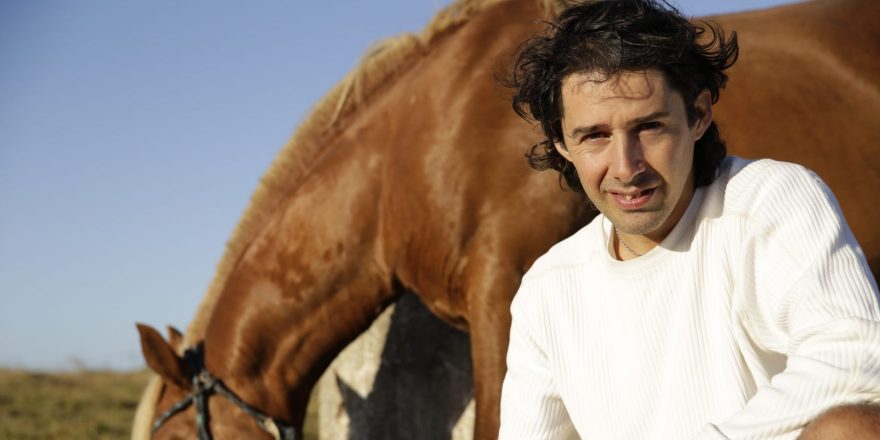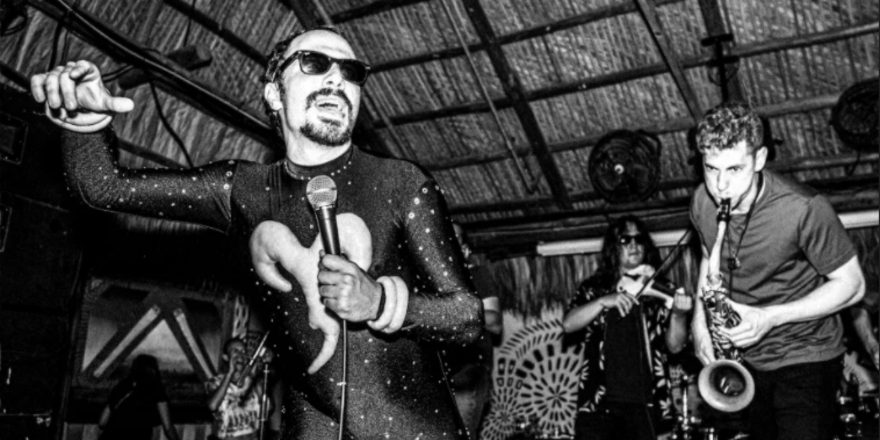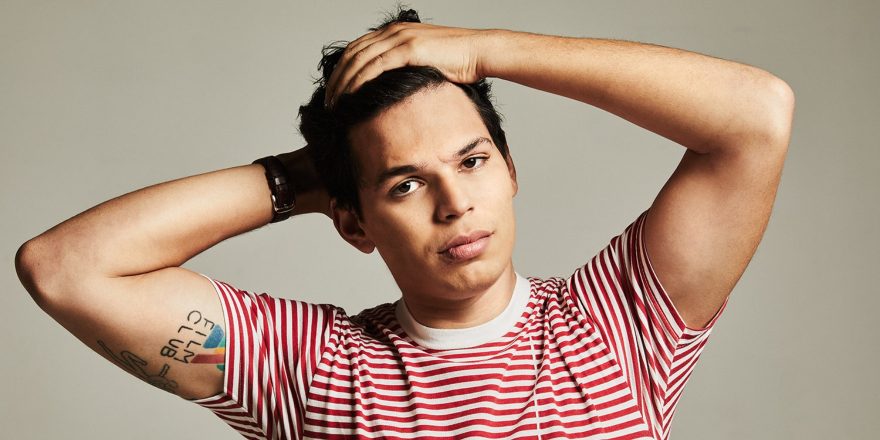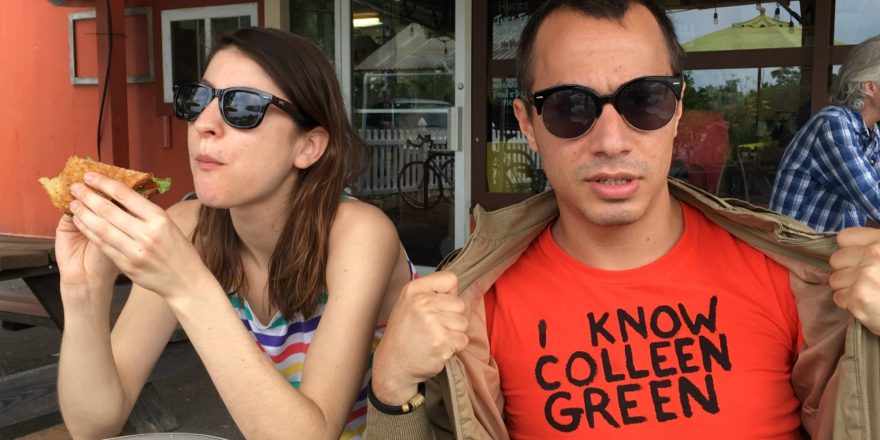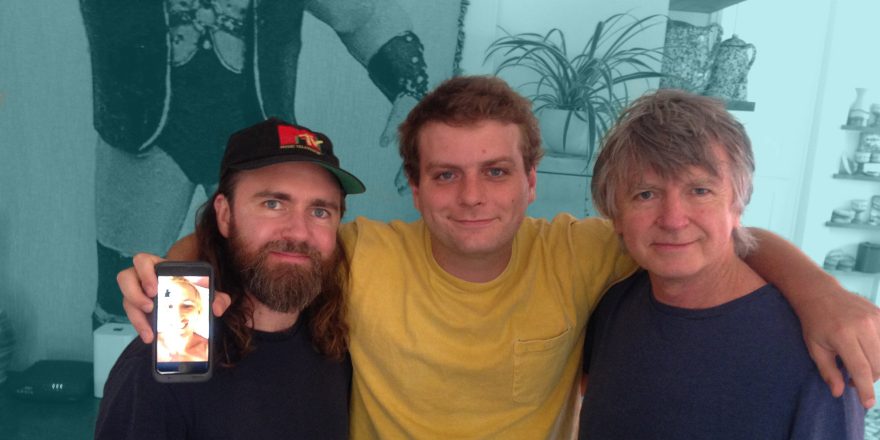Chapter 1
Exiliado economico. Economic exile.
When I was 16, my parents told my brothers and I that we would be leaving our hometown of Montevideo, Uruguay for Queens, New York. At that time, I was just starting to get my first taste of independence, self-assurance, and security, but the situation in Uruguay was bleak because of a regional economic crisis. My parents thought that this would be an opportunity for a different future.
In October 2000, my father went ahead to meet his brother who had been living in Queens since the ‘70s. My brothers, my mother, and I stayed behind waiting for our time to go. Though we had family in New York, we did not qualify for any type of permit to reside there legally. Regardless of that, my parents moved on with their plan and we would live there as undocumented citizens. I — somewhat of a reasoning individual by that age — was terrified of such thing. Very soon after, my mother took me into a room and told me that I was to go ahead, meet my father and work along his side to accelerate the process of moving the family to Queens. It seemed like fate, and in April 2002, I left Uruguay.
Upon arrival, my father took me on the 7 train to Grand Central; we walked uptown on Park Ave. That’s my first memory of New York. The following day, I was to start working. My father had gotten me a job where he worked, a picture frame factory in Long Island City. It was such a contrast. I was in a foreign city, working full time, with no friends and a brand new lifestyle. I did not want this life, but I was denied support, so I felt discouraged to go back to Uruguay alone. Though I was at an age in which I could have felt “independent,” the lack of support made me feel very dependent on my family. I was very naive still.
Here is the tricky part: The rage caused by being uprooted coexisted with the excitement of being in a city with the qualities of New York.
Since it was just my father and me, anytime we would have off from work we would go out and experience the city. My fondest memory from that time was my father taking me to museums and teaching me to enjoy art. That might sound pretentious, but looking back, I do get a feeling that, subconsciously, that’s what he did — beyond the aesthetics of the artifacts spread throughout museums and streets, we would talk about their significance in time, what they meant and how they affected our human experience.
He also taught me to enjoy food. Up until then I had only known Uruguayan food — which is a combination of Spanish and Italian dishes plus grilled beef (Uruguayan style). I had never had or heard of a taco, chicken tikka masala, or french toast. The same attitude he had towards looking at art, he had towards food. I feel that his idea was: You have to see it in context and not compare it to what you know; that way, you enjoy it only for what it is. These were tumultuous times, because I was having this great enlightening experience, but at the same time, I was being pressured to stay in America as an undocumeted citizen.
While all this was happening, I enrolled in GED and English classes at LaGuardia Community College, blocks away from the factory. My mother and my brothers arrived in November 2002.
Quite quickly, we made friends with everyone on the block. At the time it seemed normal, but now that I have perspective, it’s a beautiful thing that no one treated us differently because we were newcomers. I mean, it’s surprising that we have normalized that people would treat others differently because they are newcomers to a city, but unfortunately that’s how it is. New York has that beautiful quality to it — there was never any discrimination towards us in my neighborhood. At the time, Queens was still the type of community where people gathered on stoops, played ball on the street, and kept their doors open for anyone in the building to walk in like Kramer. This atmosphere helped ease my distress.
Soon after, during a summer course in 2004 at LaGuardia, I met Jose Garcia. He was sitting in front of me in a 3D design class and asked me if I played the guitar. Yes, that was the first thing he asked! I said, “Yes,” and we made plans to get together that weekend — he happened to be from Jackson Heights as well. Through him, I met a bunch of people from the neighborhood with similar interests to mine (music-making, painting, etc). With them, I was immersed in a particular way of seeing the city and living there.
We formed The Beets, a band which was the first and main outlet to my songwriting at the time, and a very strong support circle. Everyone in my crew made an effort to make me feel like I belonged. I remember this vividly, one friend telling me, “You are a New Yorker now. Yes, Uruguayan but New Yorker too. New Yorkers are us, the ones born here, and you, the immigrants. We have no place to go but to be here.” I took that to heart, and it helped me live through all those years. But then as I grew up and became a stronger individual, this turned into a question: Where am I really from?
Chapter 2
The Uruguayan from New York.
Time passed and we acclimated to living in New York. We envisioned nothing but a life there. However, something happened that planted a seed in my head that I’m still now dealing with.
In April 2016, I played my first concert in Montevideo. To me, that moment gave closure to an open circle. The one channel of expression that kept me company while in the toughest moments of isolation — the same one that had opened many doors for me in New York — is the same one that brought me back, opened a door, and started a conversation with my place of birth. Music keeps on healing, and now has provided an opportunity to reconnect with something that I had forcefully put behind.
Fortunately, I was able to forge a bond with an audience in Uruguay, and in other countries in the region, so tours would be programmed through there every year. The constant visits to Montevideo have helped establish relationships with my contemporaries in the city. I made many new acquaintances in the music scene, and with people in general; I slowly started seeing the Uruguayan in me that I had put aside to survive in New York. Not that I drastically had to stop being Uruguayan to live in New York, but being there definitely shaped my personality to be able to fit in. I became a mix of New Yorker and Uruguayan — different from “full Uruguayan,” or what I would have been if I had stayed in Uruguay my whole life.
The following years were a bit of the same — a lot of touring promoting my music, making recording plans, spending some brief time in New York with friends and family, more touring, and over again. The idea of visiting Uruguay for an extended period of time seemed very remote until COVID hit. When that happened, I was working on what would be my next album, Real Life Situations. When I heard the news, I went back to Queens to be close to my family in case of an emergency.
The following months were very confusing. Some conversations I had with friends in Montevideo made me realize that this would be a good opportunity to visit for an extended period. As I was coming close to finishing my album, I bought a one way ticket to Uruguay.
I have been here now since September, and it’s been quite an experience. Through the years I have traveled and lived in many different cities. Generally, wherever I go, I get along well with people. I would always be the guy that comes for some time, and then leaves. On the other hand, coming to Montevideo had a special connotation. In this city, I am a native, people know me, I have family here. I am something of a visitor, but I am also coming back home. Here in Uruguay, I am as Uruguayan as everyone else.
Even though the conditions for a visit are not ideal right now, I got to experience life in the long term here. I got to see how Uruguyans live under a global pandemic like this. I have sharpened my Uruguayan Spanish. I have formed strong bonds and new opinions about the way I see Montevideo and New York from afar.
Chapter 3
The Future.
Now it’s time to go back to New York. I will be visiting family, working on music, spending some time there, and vibing with the city with all this new information in my head.
One of my favorite movies is The Godfather. There is one line in the movie that describes my relationship with New York really well: “Just when I thought I was out, they pull me back in!” It seems a never ending story, the one I have with New York. There have been many times when I have wanted to leave, but I had never before gotten to do so. I have let it go in some ways. I have come to understand that if I’m asked where I’m from, I might have to gently avoid the conversation or chew their ear off. It’s hard to explain. Maybe it’s possible to live in two places at once, divide my time between the two.
It’s hard to understand life as we live it. As I lived I have hit many seemingly dead ends but in time things clear away. It’s nice to look back and see that things should not be as black and white as, am I Uruguayan or a New Yorker? What if I can be both? I don’t know where I’ll live. It’s nice to have plans and just enjoy the ride, let the destination be unknown.
(Photo Credit: Violeta Capasso)



